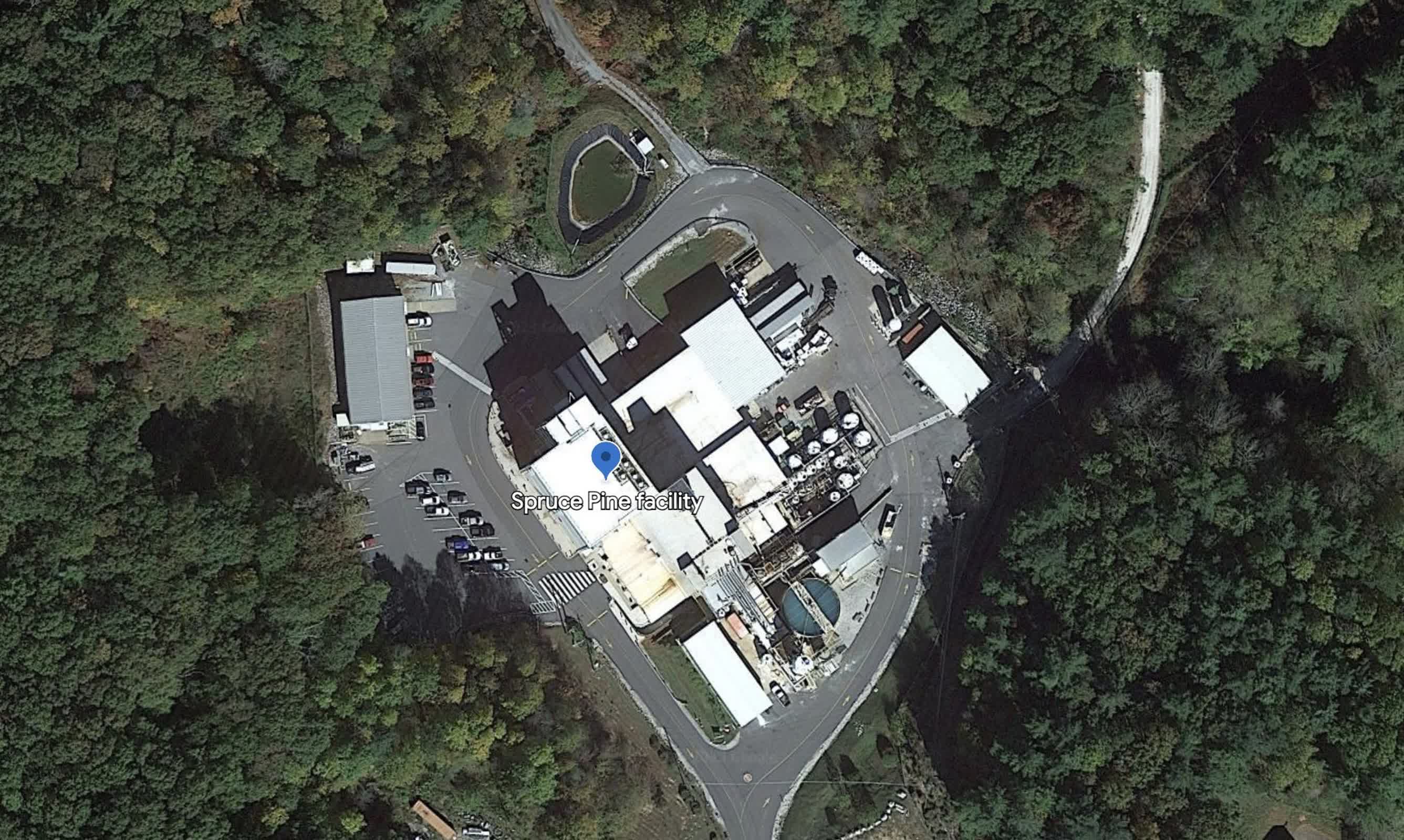Two mines in North Carolina are the world’s only producer of the quartz necessary for semiconductor manufacturing
Why it matters: Ultra-high-purity quartz is an essential component to semiconductor chips, and the only places in the world that can meet this need are two mines in a small North Carolina town. The mines’ owner, Sibelco, is investing $700 million to expand capacity, but is that enough to keep up with AI-fueled chip demand?
Spruce Pine is a small town about two hours drive northwest of Charlotte, NC. You can get to the general area via a number of ways, depending on your point of origin, but for the last stretch of the trip, you need to travel down Fish Hatchery Rd. It’s a two-lane rural highway, as depicted in Google Maps, set amid a pleasant scenic backdrop.
It’s on this road that the modern economy rests, according to Wharton associate professor Ethan Mollick, who teaches innovation and entrepreneurship and also examines the effects of artificial intelligence on work and education. That’s because the road runs to the two mines that are the sole supplier of the quartz required to make the crucibles needed to refine silicon wafers.

This is not the first time these mines – owned by Sibelco, which mines, processes, and sells specialty industrial minerals – have been highlighted as integral not only to the global semiconductor industry but also to the solar photovoltaic markets.
Ed Conway raised the issue in his book, Material World, published last summer. Even before that, various media have covered the obscure mines. Mollick raised it again in a recent Tweet, emphasizing its strategic importance. If the mines were somehow to stop operating, “it would likely [be] a few years of major disruption while techniques to generate alternatives were scaled up. But the disruption would be pretty catastrophic.”
Yes, this is exactly what the quoted passage says. It would likely a few years of major disruption while techniques to generate alternatives were scaled up. But the disruption would be pretty catastrophic.
– Ethan Mollick (@emollick) March 9, 2024
It is an alarming prospect to contemplate, and it is fair to wonder whether Mollick is indulging in a bit of hyperbole. But there is no denying the fact that digital devices around the world contain a small piece of Spruce Pine’s unique ultra-high-purity quartz. “It does boggle the mind a bit to consider that inside nearly every cell phone and computer chip you’ll find quartz from Spruce Pine,” Rolf Pippert, mine manager at Quartz Corp, a leading supplier of high-quality quartz, tells the BBC.
How did this unassuming North Carolina town gain such an outsized role in the global semiconductor supply chain? The answer is its unique mineral deposits, which formed 380 million years ago during the collision of Africa and North America. The intense heat and lack of water during their formation created quartz rock of unparalleled purity. These rocks are extracted from the ground and turned into quartz gravel, which is then processed into a fine sand. The silicon is separated from other minerals and then goes through a final milling. The final product is a powder that is shipped to refineries.
The inexorable march of artificial intelligence will continue to drive demand for chips and the materials in its supply chain. One question to ponder is whether Spruce Pine can keep up.
Sibelco, of course, has noted these trends as well and last year announced a $200 million investment to double high purity quartz capacity at its Spruce Pine facility, citing demand for the product, which is sold under the brand name IOTA. It will invest a further $500 million between 2024 and 2027.




